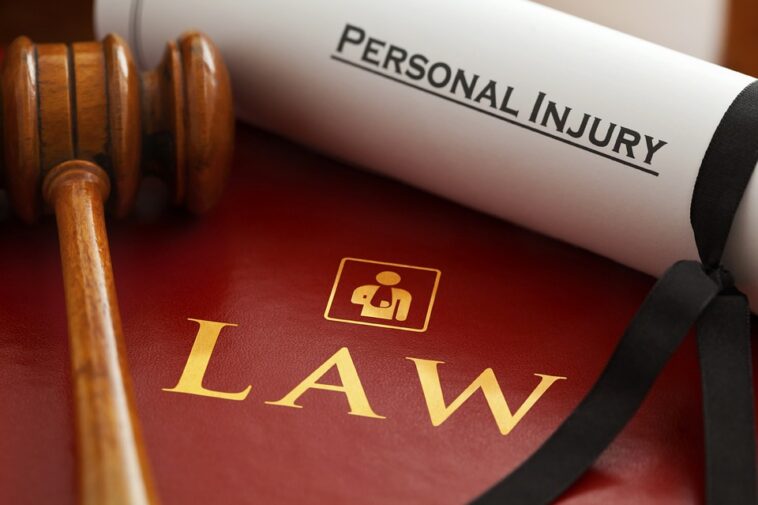Personal injury is not just a physical injury that stops you from being able to walk and do your job. It’s also an injury to your mind, emotions, and mental health, due to a case that can be proven as this kind of accident. Many people aren’t aware of what this legal case includes, but we will talk more about it, but also about the most common terms you will meet during the process.
These lawsuits include car and other traffic accidents, that result in injuries, then medical mistakes and malpractice, as bad diagnosis and errors during the treatment. It also can cover injuries that are a result of bad conditions at the workplace and public areas.
Even the negligence and abuse at nursing homes can result in this type of lawsuit too. The person who is injured hires an attorney to support them during the process, so they can get compensation for the suffering. This money helps the client recover from the pain, emotional issues, and other conditions that are a result of the personal injury accident.
Also, the wrongful death cases are a part of this, but the family is the one who is taking the compensation of the lawsuits.
Personal injury cases are different but there are terms that almost always appear. This is true for everything from car accidents to slip and fall incidents. Because of this, it is very important to be aware of some terms.

Plaintiff
A plaintiff is a group of parties or an individual party that files the personal injury lawsuit. For instance, if you fall in a grocery store because of a slip and you are injured, you become the plaintiff during the upcoming lawsuit.
Or, what we are trying to say is that the person who starts the case and initiates the lawsuit is the one who is known as the plaintiff, and they have a legal claim against another person, company, health institution, government, or even against a city or country, or political party, former or current employer, or any service provider who treated them wrongfully (and hurt them with that).
Complaint
A complaint is filed by the plaintiff, so it’s usually a document that contains all the needed information and reasons why this process is started in the first place. This is what initiates the lawsuit, as long as all the legal proceedings are respected. The complaint in personal injury cases is basically a formal expression that highlights the grievances you have against the defendant.

Defendant
You file your complaint as a plaintiff against a defendant – that’s the party that somehow hurt you and caused you or your family physical or emotional pain, known as personal injury. This means the defendant is the individual or the business that is accused of being liable for the injuries the plaintiff suffered.
It can also be a person who hurt you on purpose or someone who didn’t take care to provide the conditions that could have prevented all of the consequences, which are now a case of personal injury. If we are to think about the example mentioned above, the grocery store becomes the defendant in a personal injury lawsuit.
Statute Of Limitations
This is how much time is available according to law to file your personal injury lawsuit. It will vary from one location to the next and even from one case to another. The time frame can be very small, just one year long. Or, in other cases, like with some civil suits, the term can be 10 years.
When negligence is questioned in personal injury cases, the statutes of limitations that apply are usually as long as 2 or 3 years. Some special exceptions do exist when referring to malpractice cases. Always check what state laws apply so you can be aware of how much time is available for you.

Negligence
This is defined as a tort that appears due to the carelessness of an individual or not acting with the proper reasonable care. In order to prove the negligence, the plaintiff needs to prove their case.
For starters, there is an obligation or a duty that the defendant needs to have in relation to the plaintiff. Then, a defendant needs to be shown as having breached the legal duty. The third thing is to show that it was the breach that caused the damage the defendant received. The fourth thing the plaintiff needs to prove is that the damages do exist. Damages, causation, breach, and duty almost always appear in personal injury cases.
Getting back to the grocery store, there is a duty to keep absolutely all aisles safe, without hazards. When a spill is not properly cleaned at a suitable time, it is considered to be negligence.
Settlement
This is the final stage of the case when the defendant is offering you money to settle, and you, as a victim, have the right to accept it or deny it. You need to consult with your attorney too. Also, the settlement can be offered in advance, during the claim, before the lawsuit is filed.
But, not all of the defendants are ready to do that, and they want to avoid paying the victim and proving them innocent at any cost. That’s why many claims end up with lawsuits, and when the defendant is claimed guilty, they also need to cover the court and legal expenses in most cases. But, as we all know, their offer before the lawsuit is usually not enough to cover the expenses and costs that are a direct result of the injury.

Final Thoughts
As you can so easily see, there are several terms that appear in personal injury cases. It is very important that you get help by hiring an injury attorney since this is going to definitely help you to understand absolutely everything. If you have any questions, do be sure you will discuss terms with the lawyer. This is definitely something that is going to help you properly understand everything.




